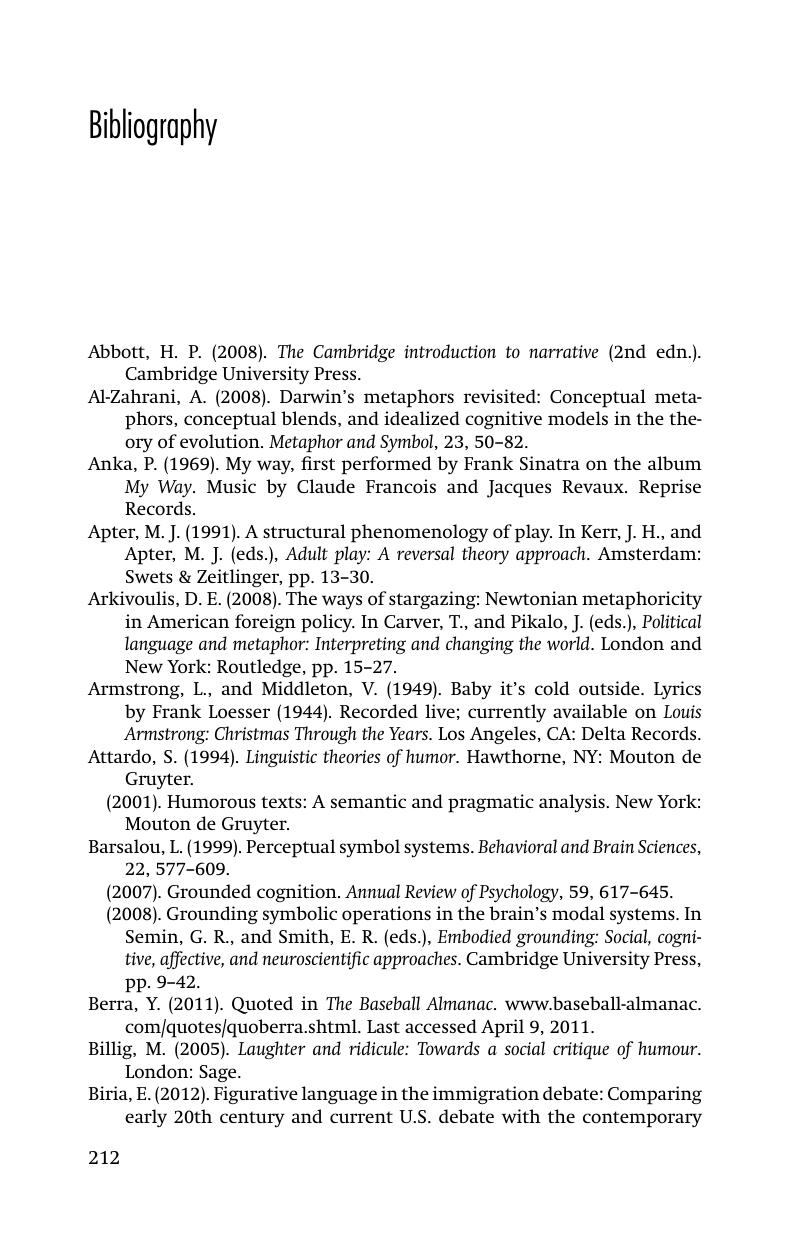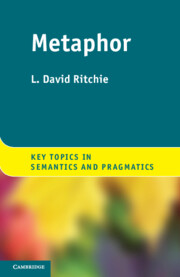Book contents
- Frontmatter
- Contents
- Figures
- Acknowledgments
- 1 Introduction
- 2 Understanding metaphors
- 3 Categorization and relevance
- 4 Conceptual metaphors
- 5 Perceptual simulation
- 6 Metaphors and framing effects
- 7 Language play
- 8 Metaphors in conversation
- 9 Metaphors in politics
- 10 Metaphors in literature
- 11 Closing reflections
- Glossary
- Bibliography
- Index
- References
Bibliography
Published online by Cambridge University Press: 05 February 2013
- Frontmatter
- Contents
- Figures
- Acknowledgments
- 1 Introduction
- 2 Understanding metaphors
- 3 Categorization and relevance
- 4 Conceptual metaphors
- 5 Perceptual simulation
- 6 Metaphors and framing effects
- 7 Language play
- 8 Metaphors in conversation
- 9 Metaphors in politics
- 10 Metaphors in literature
- 11 Closing reflections
- Glossary
- Bibliography
- Index
- References
Summary

- Type
- Chapter
- Information
- Metaphor , pp. 212 - 225Publisher: Cambridge University PressPrint publication year: 2013



